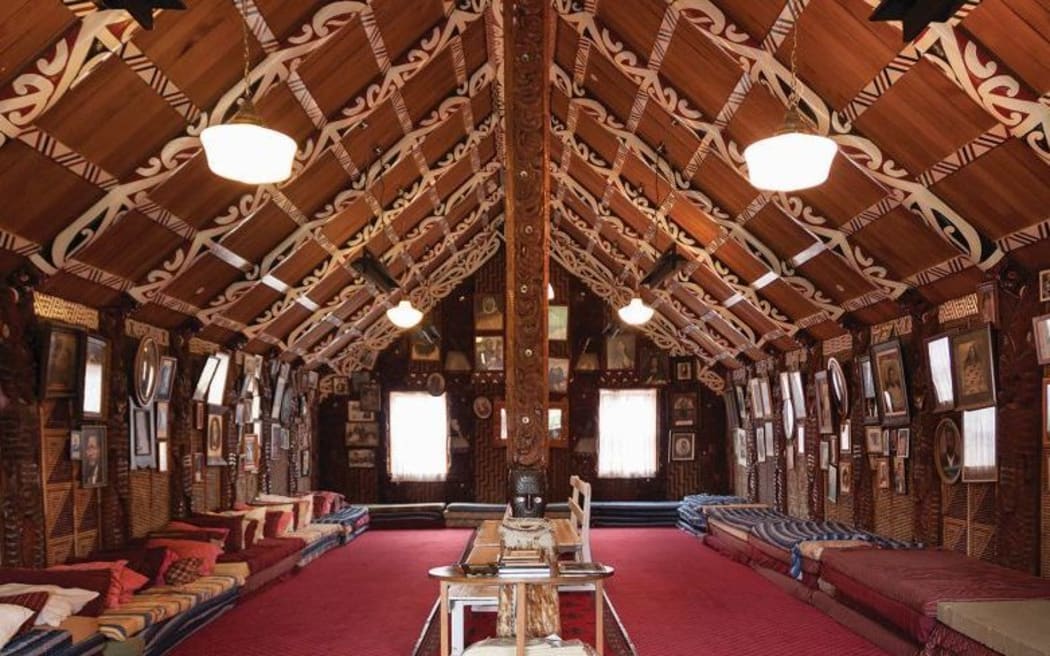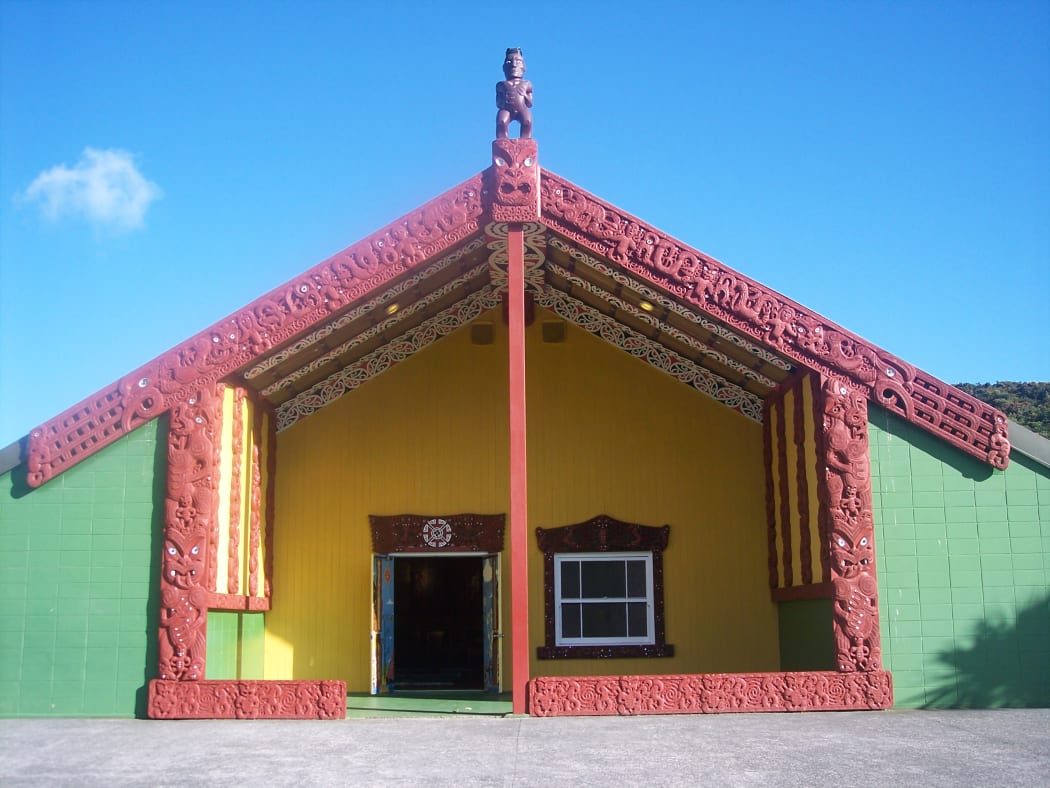The demand for repairs for marae nationwide is growing as many hit the century-old mark.

The intricate and rich interior of Kauhuranaki marae. Photo: Robin and Sam Walters
But there are fears the loss of knowledge of traditional Maori art work means some marae are missing out on their own tribal touch.
The Maori built heritage advisor for Heritage New Zealand Pouhere Taonga Jim Schuster visits marae nationwide to help restore tukutuku - the woven panels that cover the interior walls of the marae.
He has been doing the job since 2003 and his services are in high demand.
"The marae that were built around those early years are now getting to 80-100 years old.
"A lot of it is just wear and tear but it's the kowhaiwhai and whakairo on the outside of the wharenui that take the brunt of the weather. But on the inside it's the tukutuku panels that takes it.
"Just people rubbing up against them, and haututu kids picking at them, probably."
Mr Schuster, of Te Arawa, learned his technique from his mother, who was taught by her parents.
He said this intergenerational knowledge could not be learned at university and he was worried it was disappearing fast.
"I have to tell the people, I say 'look, this is how I was taught, this is matauranga I've learned, so it's naturally going to be a Te Arawa version of this matauranga'.
"I usually ask them are there any old people around that still know about tukutuku or know about where the kiekie (weaving plant) is, but not a lot of them do - it's just knowledge that's gone."
A big part of Mr Schuster's work involves harvesting traditional plants such as toitoi and kiekie to fix the tukutuku panels.
He said that was difficult as a lot of native bush had been taken over by pine trees and invasive plants.

The Wainuiomata Marae. Photo: Supplied/Cheryl Davies
Ngati Kahungunu Iwi Incorporated chair Ngahiwi Tomoana said through its Treaty Settlement, the Hawke's Bay iwi was planting kiekie to combat this.
But he said some marae had to improvise in the meantime.
"One of the most recent marae built in Kahungunu is Pukemokimoki at Maraenui in Napier. They've used all the tukutuku methods but they've used plastic and blings and everything else that look the same but in a modern context. So that's what we have to cope with."
Mr Tomoana said Kahuranaki Marae recently celebrated its 100th birthday, and kiekie was used instead of flax for some of its repairs.
Heritage New Zealand Pouhere Taonga Maori heritage manager Dean Whiting said restoration work included using glass and paint to protect surfaces and applying chemicals to stop decay.
But Mr Whiting said it was not just natural wear and which threatened marae.
"Our wharenui and places like that are quite vulnerable to catastrophic events like fire and in some cases flooding. But really, fire is probably one of the greatest risks we have, especially for our taonga whare.
"We are often promoting the message about really considering sprinkler systems as a way to protect buildings so that's probably a key one."
Mr Whiting said not many whanau lived on the pa anymore, which made it hard to keep an eye on marae.
And said says sprinkler systems were also expensive to install.

